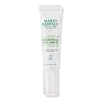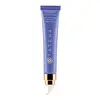What's inside
What's inside
 Key Ingredients
Key Ingredients

 Benefits
Benefits

 Concerns
Concerns

 Ingredients Side-by-side
Ingredients Side-by-side

Water
Skin ConditioningGlycerin
HumectantMethylheptyl Isostearate
Skin ConditioningPolyglyceryl-2 Diisostearate
EmulsifyingSqualane
EmollientPropanediol
SolventTitanium Dioxide
Cosmetic ColorantMica
Cosmetic ColorantCetearyl Alcohol
EmollientNiacinamide
SmoothingCetearyl Olivate
Hydroxyethyl Acrylate/Sodium Acryloyldimethyl Taurate Copolymer
Emulsion StabilisingSilica
AbrasivePhenoxyethanol
PreservativeButylene Glycol
HumectantSorbitan Olivate
EmulsifyingChlorphenesin
AntimicrobialCaprylyl Glycol
EmollientSodium Sulfite
PreservativeCaffeine
Skin ConditioningMaltodextrin
AbsorbentArnica Montana Flower Extract
MaskingCentella Asiatica Extract
CleansingCarbomer
Emulsion StabilisingPolyacrylate-13
Polysorbate 20
EmulsifyingTin Oxide
AbrasivePolyisobutene
Sodium Hyaluronate
HumectantXanthan Gum
EmulsifyingHydroxyethylcellulose
Emulsion StabilisingIsohexadecane
EmollientSorbitan Isostearate
EmulsifyingPolysorbate 60
EmulsifyingPalmitoyl Pentapeptide-4
Skin ConditioningCI 77491
Cosmetic ColorantWater, Glycerin, Methylheptyl Isostearate, Polyglyceryl-2 Diisostearate, Squalane, Propanediol, Titanium Dioxide, Mica, Cetearyl Alcohol, Niacinamide, Cetearyl Olivate, Hydroxyethyl Acrylate/Sodium Acryloyldimethyl Taurate Copolymer, Silica, Phenoxyethanol, Butylene Glycol, Sorbitan Olivate, Chlorphenesin, Caprylyl Glycol, Sodium Sulfite, Caffeine, Maltodextrin, Arnica Montana Flower Extract, Centella Asiatica Extract, Carbomer, Polyacrylate-13, Polysorbate 20, Tin Oxide, Polyisobutene, Sodium Hyaluronate, Xanthan Gum, Hydroxyethylcellulose, Isohexadecane, Sorbitan Isostearate, Polysorbate 60, Palmitoyl Pentapeptide-4, CI 77491
Water
Skin ConditioningGlycerin
HumectantPropanediol
SolventPEG-400
Emulsion StabilisingSqualane
EmollientSericin
Skin ConditioningCamellia Sinensis Leaf Extract
AntimicrobialOriganum Majorana Leaf Extract
AntiseborrhoeicPanax Ginseng Root Extract
EmollientLonicera Japonica Leaf Extract
Skin ConditioningStearyl Glycyrrhetinate
Skin ConditioningCaffeine
Skin ConditioningRoyal Jelly Extract
Skin ConditioningThymus Serpyllum Extract
Skin ConditioningGold
Cosmetic ColorantAlgae Extract
EmollientHydrolyzed Hyaluronic Acid
HumectantPersea Gratissima Oil
Skin ConditioningPrunus Armeniaca Kernel Oil
MaskingRosa Canina Fruit Oil
EmollientInositol
HumectantHelianthus Annuus Seed Oil
EmollientHydrogenated Lecithin
EmulsifyingSodium Hyaluronate Crosspolymer
HumectantGlycosyl Trehalose
Emulsion StabilisingHydrogenated Starch Hydrolysate
HumectantPotassium Hydroxide
BufferingSodium Dilauramidoglutamide Lysine
HumectantNatto Gum
Xanthan Gum
EmulsifyingDisodium EDTA
Sorbitan Stearate
EmulsifyingDimethicone
EmollientDipentaerythrityl Hexahydroxystearate
EmulsifyingCarbomer
Emulsion StabilisingMica
Cosmetic ColorantTin Oxide
AbrasiveTitanium Dioxide
Cosmetic ColorantButylene Glycol
HumectantPentylene Glycol
Skin ConditioningSodium Chloride
MaskingEthylhexylglycerin
Skin ConditioningBehenyl Alcohol
EmollientAlcohol
AntimicrobialPhenoxyethanol
PreservativeWater, Glycerin, Propanediol, PEG-400, Squalane, Sericin, Camellia Sinensis Leaf Extract, Origanum Majorana Leaf Extract, Panax Ginseng Root Extract, Lonicera Japonica Leaf Extract, Stearyl Glycyrrhetinate, Caffeine, Royal Jelly Extract, Thymus Serpyllum Extract, Gold, Algae Extract, Hydrolyzed Hyaluronic Acid, Persea Gratissima Oil, Prunus Armeniaca Kernel Oil, Rosa Canina Fruit Oil, Inositol, Helianthus Annuus Seed Oil, Hydrogenated Lecithin, Sodium Hyaluronate Crosspolymer, Glycosyl Trehalose, Hydrogenated Starch Hydrolysate, Potassium Hydroxide, Sodium Dilauramidoglutamide Lysine, Natto Gum, Xanthan Gum, Disodium EDTA, Sorbitan Stearate, Dimethicone, Dipentaerythrityl Hexahydroxystearate, Carbomer, Mica, Tin Oxide, Titanium Dioxide, Butylene Glycol, Pentylene Glycol, Sodium Chloride, Ethylhexylglycerin, Behenyl Alcohol, Alcohol, Phenoxyethanol
Ingredients Explained
These ingredients are found in both products.
Ingredients higher up in an ingredient list are typically present in a larger amount.
Butylene Glycol (or BG) is used within cosmetic products for a few different reasons:
Overall, Butylene Glycol is a safe and well-rounded ingredient that works well with other ingredients.
Though this ingredient works well with most skin types, some people with sensitive skin may experience a reaction such as allergic rashes, closed comedones, or itchiness.
Learn more about Butylene GlycolCaffeine is most associated with coffee, tea, and cacao. In skincare, it helps with calming inflammation and is rich in antioxidants.
While caffeine is used to treat cellulite and and dark circles, further studies are needed to prove this. It has been believed to help with these skin conditions due to its ability to dilate blood vessels and increase blood flow.
Some studies are looking into caffeine's ability to protect against UV rays.
Learn more about CaffeineCarbomer is a polymer of acrylic acid. Its main role is to create a gel consistency.
A high amount of carbomer can cause pilling or balling up of products. Don't worry, most products contain 1% or less of carbomer.
Glycerin is already naturally found in your skin. It helps moisturize and protect your skin.
A study from 2016 found glycerin to be more effective as a humectant than AHAs and hyaluronic acid.
As a humectant, it helps the skin stay hydrated by pulling moisture to your skin. The low molecular weight of glycerin allows it to pull moisture into the deeper layers of your skin.
Hydrated skin improves your skin barrier; Your skin barrier helps protect against irritants and bacteria.
Glycerin has also been found to have antimicrobial and antiviral properties. Due to these properties, glycerin is often used in wound and burn treatments.
In cosmetics, glycerin is usually derived from plants such as soybean or palm. However, it can also be sourced from animals, such as tallow or animal fat.
This ingredient is organic, colorless, odorless, and non-toxic.
Glycerin is the name for this ingredient in American English. British English uses Glycerol/Glycerine.
Learn more about GlycerinMica is a naturally occurring mineral used to add shimmer and color in cosmetics. It can also help improve the texture of a product or give it an opaque, white/silver color.
Serecite is the name for very fine but ragged grains of mica.
This ingredient is often coated with metal oxides like titanium dioxide. Trace amounts of heavy metals may be found in mica, but these metals are not harmful in our personal products.
Mica has been used since prehistoric times throughout the world. Ancient Egyptian, Indian, Greek, Roman, Aztec, and Chinese civilizations have used mica.
Learn more about MicaPhenoxyethanol is a preservative that has germicide, antimicrobial, and aromatic properties. Studies show that phenoxyethanol can prevent microbial growth. By itself, it has a scent that is similar to that of a rose.
It's often used in formulations along with Caprylyl Glycol to preserve the shelf life of products.
Propanediol is an all-star ingredient. It softens, hydrates, and smooths the skin.
It’s often used to:
Propanediol is not likely to cause sensitivity and considered safe to use. It is derived from corn or petroleum with a clear color and no scent.
Learn more about PropanediolSqualane is an emollient that helps the skin hold onto moisture. It's an oily liquid that occurs naturally in certain types of fish and plant oils.
Because squalane boosts hydration in the skin, it also comes with plenty of benefits: it is an antioxidant and can help fight free radicals and skin damage. Squalane is also found to have a detoxifying effect when applied.
Squalane comes from squalene, which occurs naturally within the sebum of our skin. It is one of the oils our skin produces to keep itself hydrated. Squalane is the hydrogenated version of squalene and has a longer shelf life.
Research shows that squalane is non-irritating (even at 100% concentration).
In general, it's a fantastic ingredient. It does a great job at hydrating the skin, and it's suitable for those with sensitive skin.
The source of squalane may impact malassezia / fungal acne. This is because olive oil derived squalane can contain impurities such as fatty acids and plant waxes. Sugarcane derived squalane is recommended for anyone with malassezia concerns.
Is squalane vegan?
This depends on the source. Squalane can be derived from both plants and animals. Most squalane used in skincare comes from plants.
Please note: the source of squalane is only known if disclosed by the brand. We recommend reaching out to the brand if you have any questions about their squalane.
Read more about squalene with an "e".
Is squalane an oil?
Squalane is often called an oil, but it’s technically not; it’s a hydrocarbon, meaning it’s only made of carbon and hydrogen, unlike true oils which are triglycerides made of fatty acids and glycerol.
The term “oil-free” isn’t regulated, so companies can define it however they want. Some exclude all oils, while others just avoid mineral oil or comedogenic oils.
While some people avoid oils thinking they cause breakouts, the right kind of oil (or oil-like ingredient like squalane) can actually help balance and hydrate your skin. It’s worth testing out simple oils or squalane to see what works best for your skin.
Learn more about SqualaneTin Oxide is an inorganic oxide used to add opacity and volume to a product. In nature, it is already found in mineral form. The main ore of tin is an opaque and shiny mineral called casseterite.
Tin Oxide helps remove translucency in a product, or make it more opaque. Besides adding opacity, tin oxide is used for bulking to add volume.
Titanium dioxide is a mineral UV filter widely used in sunscreens and cosmetics.
It is one of only two UV filters officially classified as “mineral” by regulatory agencies, the other being zinc oxide.
Titanium dioxide provides broad-spectrum protection mostly in the UVB and UVAII range, with some protection in the UVAI range.
While its UVA protection isn’t as strong as zinc oxide’s, the difference is minor.
A common myth is that mineral UV filters reflect UV light. However, modern research shows titanium dioxide absorbs UV radiation like chemical filters (~95% absorption & 5% reflection).
Thanks to its non-irritating nature, titanium dioxide is suitable for sensitive, acne-prone, or redness-prone skin. It is unlikely to cause "eye sting" like other sunscreen ingredients.
A major drawback of this ingredient is its white cast and thick texture. This is why mineral sunscreens often leave a white cast and are less cosmetically elegant than chemical/hybrid sunscreens.
To improve white cast and spreadability, micronized or nano-sized titanium dioxide is often used.
There are ongoing concerns surrounding nano-titanium oxide's impact on marine ecosystems.
There is no conclusive evidence that any form of titanium oxide (or any other sunscreen ingredients) will cause harm to marine ecosystems or coral reefs. The science is still developing but many consumers are keeping a close eye on this issue.
Please note, many destinations have reef-safety sunscreen rules. For instance, the U.S. Virgin Islands advises all visitors to use non-nano mineral sunscreens.
Nano mineral sunscreens once raised safety concerns about absorption into skin.
Extensive research has shown that they do not penetrate healthy or damaged skin; they remain safely on the surface and the top layer of dead skin (stratum corneum).
You'll likely find titanium dioxide bundled with alumina, silica, or dimethicone. These ingredients help make titanium dioxide highly photostable; this prevents it from interacting with other formula components under UV light.
Learn more about Titanium DioxideWater. It's the most common cosmetic ingredient of all. You'll usually see it at the top of ingredient lists, meaning that it makes up the largest part of the product.
So why is it so popular? Water most often acts as a solvent - this means that it helps dissolve other ingredients into the formulation.
You'll also recognize water as that liquid we all need to stay alive. If you see this, drink a glass of water. Stay hydrated!
Learn more about WaterXanthan gum is used as a stabilizer and thickener within cosmetic products. It helps give products a sticky, thick feeling - preventing them from being too runny.
On the technical side of things, xanthan gum is a polysaccharide - a combination consisting of multiple sugar molecules bonded together.
Xanthan gum is a pretty common and great ingredient. It is a natural, non-toxic, non-irritating ingredient that is also commonly used in food products.
Learn more about Xanthan Gum